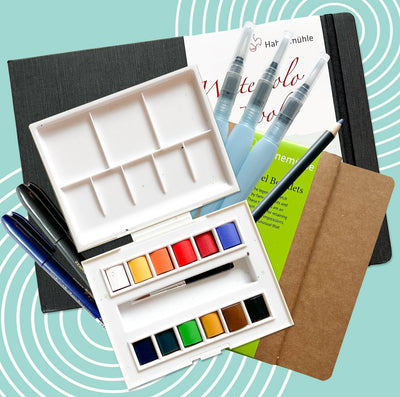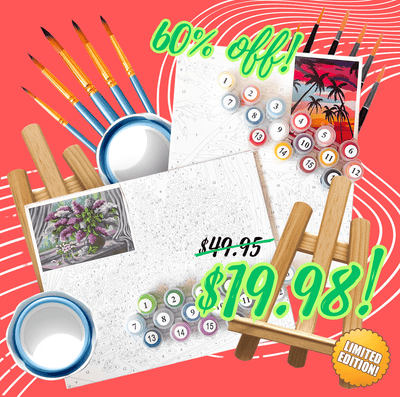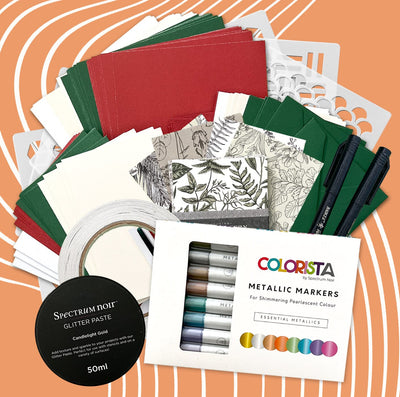
“[Man Ray] reinvented photography – a technique to which his ingenuity opened countless possibilities – and endowed it with the wings of poetry.”
Before glass plate and film photography and long before today’s digital camera age, there was the photogram. Simply put, a photogram is a photographic image made without a camera: objects are placed directly onto the surface of a light sensitive material (i.e. photographic paper) and exposed to light. A negative shadow image results, in tones of white, gray and black, depending on the transparency of the objects used. For roughly two centuries, they have fostered and documented scientific inquiries, led to technological discoveries, and shaped artistic movements. We’ll take a quick leap through this history now, with a focus on the photogram during the age of Modernism through the this history now, with a focus on the photogram during the age of Modernism through the Ray (1890-1976).
How to Document Nature in the 19th century without Photography? Invent the Photogram!


Some of the earliest photographic images were photograms. Around 1800 the British inventor Thomas Wedgewood (1771-1805) attempted to capture the image in a camera obscura by means of silver nitrate, a light-sensitive substance, on paper, as did House of Commons member and polymath William Henry Fox Talbot (1800-1877) in 1834. Talbot called them photogenic drawings, which he made by placing leaves and other botanical specimens onto sensitized papers, and leaving them outdoors under the sun to expose (some of the results can be viewed in his 1844 publication, The Pencil of Nature). But it’s Anna Atkins (1799-1871) who we credit with creating the first book illustrated with photographs: British Algae: Cyanotype Impressions. It featured photograms of botanical specimens, which were made with Sir John Herschel’s (1792-1871) cyanotype process, a cameraless technique (and forerunner of the blueprint) that produces blue pictures. Later on, Herschel devised a more permanent means of fixing imagery, the “hypo,” with the aide of hyposulfate of soda. During this golden age of photographic technology, these early scientific uses of the photogram reflected and fuelled interests in chemistry and botany, and chimed with people’s thirst for a more truthful means of viewing the world.
20th-century Modernism: What caused the Photogram to Become an Art Object?

As photography developed there was less need for these cameraless processes. The close of the 19th century and advent of modernism brought with it enormous social, technological and political transformations. The function of photography and art shifted as artists took into account cultural changes, which included various waves of industrial growth, the rapid expansion of cities, and the end of long standing political regimes in Europe, culminating with the horrors of the First World War. These events led artists and other thinkers to question long-held scientific and religious ideals and conventional attitudes. As a consequence, there was a large push toward abstract representation. The photogram, with its capacity for abstract compositions and bold contrasts, was regarded for the first time as an art object. It became a fundamental Modernist tool, used in particular by Dadaists such as László Moholy-Nagy (1895-1946) and Raoul Hausmann (1886-1971) to enforce their new mode of vision, and others who merged the technique with photomontage, including Pablo Picasso (1881-1973) and Russian constructivist Alexander Rodchenko (1891-1956). It was German Dada artist Christian Schad (1894-1982) to first re-introduce the technique around 1918, to capture the discarded objects he collected and arranged randomly. This practice reflected the movement’s interest in everyday mass-produced objects by artists such as Marcel Duchamp (1887-1968). But it was Man Ray who took the art form to the next level.
Introducing Man Ray and Dada, A Radical Art Movement that Changed Everything

Born in Philadelphia as Emmanuel Radnitzky, Ray trained as architectural draftsman and engineer, and earned his living as a graphic designer and portrait photographer. After his move to New York he made the mind-blowing discovery of European modernism and other avant-garde art at Alfred Stieglitz’s 291 Gallery and the seminal 1913 Armory Show. This influenced Ray’s own show of Cubist and Futurist paintings and drawings in 1915. Notably, he would have seen the pioneering paintings of Duchamp at the Armory Show, who spent a portion of WWI in New York. When Duchamp produced his iconic sculptures, Bottle Rack (1914) and Fountain (1917), the “anti-art” movement Dada was launched. First exhibited at the Grand Central Palace, Fountain was an ordinary urinal to the naked eye. One of his early “readymades,” it was an everyday manufactured object, slightly modified (in this case with the addition of an artist’s signature) to become something else. This act illustrated a main tenet of Modernist ideology: the goal to rethink all that came before. With the readymade, Duchamp asked viewers to question what they were looking at, to the extent that even a urinal could be art.
Concurrently with Duchamp’s efforts in New York, Dada developed in Zurich during WWI, and spread throughout Western Europe. It was essential to communicating the wider message of Modernism, as its practitioners encouraged a renewed importance in the visual, and urged viewers to start from scratch in a sense, to use their eyes to see what was truly in front of them. According to Dona Budd, “Dada rejected reason and logic, prizing nonsense, irrationality and intuition.” Artists searched for ways to stop relying on the function of reason, which they argued was conditioned by cultural upbringing and education. Their methods privileged chance or “automatism”: “the process of yielding oneself to instinctive actions after establishing a set of conditions (such as size of paper and medium), within which a work would be carried out.” The photogram, with its propensity for random, abstract composition as well as the element of the unknown it could achieve during exposure, was the ideal Dada medium.

Likewise, Man Ray “used chance and dislocation of ordinary things from their everyday settings to surprise his viewers into a new awareness.” For instance, he incorporated the idea behind the readymade into his paintings, sculptures, films and photographs. This could be seen as early as 1916, when he exhibited his first proto Dada object, an assemblage on paper titled Self Portrait. Located somewhere between a collage, sculpture and painting, the artwork was composed of signs including a handprint, music symbols, speakers and a doorbell to signify the artist’s presence. It was set in a vague space that resembled an architectural niche. Like the readymade, space and background were recognizable objects that, when juxtaposed, were made into something new.


'
Similarly, in his photograph Egg Beater (1918), an everyday object transformed into an abstract sculpture through close-up viewing and the shadow it cast on the surface on which it was placed. Later, predominantly after his 1921 move to Montparnasse, then a heavily artist populated Paris neighborhood, he modified ordinary objects so that they became unusable, absurd and even threatening. For example, his sculpture Gift (1921) was a flatiron with metal tacks attached to the bottom, whose name rendered its would-be damaging effects all the more ironic.
Man Ray’s Accidental Invention in the Roaring Twenties: The Rayograph


In addition to making objects, Ray developed a unique photographic means of image making. His foray into the photogram process was the accidental result of making contact prints from large plates using a glass negative on a sheet of light-sensitive paper. Ray later recounted the episode:
One sheet of photo paper got into the developing tray—a sheet unexposed that had been mixed with those already exposed under the negatives—I made my several exposures first, developing them together later—and as I waited in vain a couple of minutes for an image to appear, regretting the waste of paper, I mechanically placed a small glass funnel, the graduate and the thermometer in the tray on the wetted paper. I turned on the light; before my eyes an image began to form, not quite a simple silhouette of the objects as in a straight photography, but distorted and refracted by the glass more or less in contact with the paper and standing out against a black background, the part directly exposed to the light.
With the photogram, which he dubbed “Rayograph,” Ray applied his affinity for everyday objects and randomness of technique. He described how he made his early experiments with the medium, “taking whatever objects came to hand; my hotel-room key, a handkerchief, some pencils, a brush, a candle, a piece of twine.”


In 1922 his Rayograph output was particularly plentiful. He succeeded in making abstract compositions of clear black-and-white contrasts, creating shapes from things as varied as hands and artists’ tools. The compositions floated in space, conjuring up scenes such as solar eclipses, while also connecting to the flat aesthetic of his paintings, such as his airbrush on glass Aerograph (1919), and the work of his Art Deco contemporaries. Ray’s work produced both the effect of randomness as well as highly styled arrangements of geometrical forms. With “Kiki’s visage,” Ray transformed a human portrait into a black-and-white silhouette, of flat shapes with hardly any nuance. Still, viewers could make out the subject’s fashionable 1920s bob hairstyle.
After Dada What Happened? Surrealism Changes the Look of the Photogram in the 1920s and 30s



In other Rayograph examples Ray’s transition to Surrealism was evident. This was particularly noticeable in his 1922 Spiral series, composed of a spiral object and other shapes, from cubes to glass goblets. They resembled the familiar dream-like landscapes of Surrealist artists such as Giorgio De Chirico and Salvador Dalì that were inhabited by fantastic quasi-organic beings and other nonsensical objects. In Ray’s photogram, there were what appeared to be wispy clouds in the background, giving the impression of different levels of space and slow movement.
These were the visual manifestations of the ideas of the poet-led journal Littérature (published between 1919 and 1924). When André Breton assumed leadership of the publication in 1922, it officially broke from Dada to transition to Surrealism. At this point Man Ray contributed the cover of its first “revised” issue. In 1925, Ray was included in the first Surrealist exhibition at Paris’ Galerie Pierre, along with Jean Arp, Max Ernst, André Masson, Joan Miró and Picasso. In addition, he documented the artistic milieu in Paris, as the author of many of the photographs of members of the Surrealist group as well as other key figures of the time, including James Joyce, Gertrude Stein and Jean Cocteau. Ray lived most of his adult life in Paris except for the WWII years until 1951, which he spent in Hollywood.
How the Photogram Impacted Man Ray’s Fashion Photography and Filmmaking in the 1920s and 30s


Ray’s photography exerted enormous influence on many generations of artists. His 1924 photograph of Kiki de Montparnasse, Violon d’Ingres, evoked iconic 19th-century painter Jean-August-Dominique Ingres’s Eastern reclining nudes. However here, with the addition of the F-holes of a violin, her body became an inanimate object, an instrument to be played. In so doing, Ray added his mark to the established canon of Art History, while also turning it on its head with his absurd representation. Two years later, Ray further fetishized the female form with his photograph of the same subject holding an African mask, Noire et Blanche. He reduced both woman and mask to shapes, objects and colors, making a 1920s statement on gender and primitivism, as well as illustrating both the influence of African Art on Modernism and the role of photography on shaping period understanding of African objects.


Noire et Blanche was published in Vogue, revealing how closely Man Ray’s commercial photography was tied to his experimental artistic work. Between 1920 and 1940 he worked as a fashion photographer for Vanity Fair, Vogue Paris and Harper’s Bazaar and the great Paris couturiers Paul Poiret, Madeleine Vionnet, Jeanne Lanvin, Gabrielle Chanel and Elsa Schiaparelli. He left a lasting mark on this genre, which was very new during the time of his contribution. In 1922, Vanity Fair even published four Rayographs, whose high contrast aesthetic connected to the look of a wide range of photography. This includes Ray’s shimmering 1935 photograph of Princess Nathalie Paley, whose body and Lucien Lelong gown were boldly outlined. His fashion photographs also illustrated his use of an array of his own innovative techniques, including double exposures as seen in his portraits of the Marchesa Casati that negotiate between dream and reality, or a 1935 image of a satin Schiaparelli gown using solarization. His work also coincided with the impact of Surrealism on fashion imagery. This can be seen in his silver gelatin print Glass Tears (Les Larmes) from circa 1930, which suggested the emotive expression of a silent film actress, whose mascara encrusted stylized lashes shed tears of glistening beads.


This filmic representation might have been a product of his work in moving imagery. Ray was a tireless experimenter in a wide variety of artistic media, including the avant-garde film genre Cinéma Pur. In Le Retour à la Raison (1923), the artist applied his Rayograph technique to the moving image: sequences included his familiar motifs of speckles, a spiral shape and pins that here were shown in movement. Other scenes presented a paper mobile spinning and the body of Kiki de Montparnasse, illuminated in strips of light. For his next film Emak-Bakia (1926), Ray again employed the Rayograph along with many other visual effects such as double exposure and soft focus; while his subsequent two films, L’Etoile de mer (1928) and Les Mystères du Château de Dé (1929) offered more narrative-centered plots.
Man Ray’s Legacy: the Photogram is Still Alive and Kicking!

The imprint of Man Ray’s photograms can be seen in the work of a range of artists both during and after his generation, whether the complex portraits of Len Lye (1901-80), which featured a range of detail in several exposures, the multifaceted compositions of Kurt Wendlandt (1917-98), or the oeuvre of German photographer and Bauhaus student Elsa Thiemann (1910-81), who created wallpaper from collaged dark photograms of plants, threads and paint blobs.
Today’s strand of nature-inspired photograms can be traced to the early scientific aims of photography as well as the work of eminent photographer Imogen Cunningham (1883-1976), whose practice was characterized by sharp focus renditions of still life subjects. This includes Willie Ann Wright’s (b. 1924) carefully composed still lifes that liken manmade objects such as clothing to organic matter through an x-ray-like visualization; as well as the cameraless practices of Michael Flomen (b. 1952), who abstracts natural phenomena such as water, firefly light and wind. Susan Derges (b. 1955) questions the relationship between the self and nature, focusing on individuals’ sensory experience, of the physical appearance of sound or the reflection of the moon on water, for instance. She pioneered a technique to capture the movement of water, consisting in immersing photographic paper direction into a water source. More recently, Adam Fuss (b. 1961) and Greg Stimac (b. 1976) have pioneered new means of exploring and documenting nature via the photogram.


Man Ray’s radical Dada inquiries hold renewed importance in today’s postmodern landscape, where many artists task themselves with rethinking Modernist ideologies. Certain practitioners have used the photogram to revisit past representational tropes including abstraction (Walead Beshty, b. 1976, and Markus Amm, b. 1969) or portraiture (Kunié Sigiura, b. 1942, and Christopher Bucklow, b. 1957). Others question the meaning of the media itself, viewing historicism as a means to new discoveries, such as Christian Marclay’s (b. 1955) expressionistic cyanotype landscapes; Nancy Wilson-Pajic’s (b. 1941) work that studies the relationships between techniques; and Kate Cordsen’s (b. 1964) practice of combining 19th-century chemical methods with film and digital technologies. It is an art form that, in true Ray style, never ceases to inspire innovation.

Images
- Man Ray in his Paris studio, 1923 © Man Ray Trust / ADAGP
- William Henry Fox Talbot, Photogenic Drawing of A Plant, c. 1835-45, Iris and B. Gerald Cantor Center for Visual Arts at Stanford University, via Wikimedia Commons
- Anna Atkins, Cystoseira granulata, cyanotype photogram, c. 1843-53, Photographs of British Algae: Cyanotype Impressions, via Wikimedia Commons
- Christian Schad, Amourette, Gelatin silver printing-out-paper print, 1918, Museum of Modern Art © 2017 Artists Rights Society (ARS), New York / VG Bild-Kunst, Germany
- Marcel Duchamp, Fountain, 1917, Tate Modern © Succession Marcel Duchamp / ADAGP, Paris and DACS, London 2017
- Man Ray, Self-Portrait, Assemblage 1916. Photo source: Getty.edu
- Man Ray, Egg Beater, 1918, Tate Modern © Succession Marcel Duchamp / ADAGP, Paris and DACS, London 2017
- Man Ray, Cadeau/Gift, 1921
- Man Ray, Champs délicieux no. 11, Rayograph, 1922 © Man Ray Trust / ADAGP
- Man Ray, Champs délicieux no. 04, Rayograph, 1922 © Man Ray Trust / ADAGP
- Man Ray, Champs délicieux no. 05, Rayograph, 1922 © Man Ray Trust / ADAGP
- Man Ray, Kiki’s profile, Rayograph, 1922 © Man Ray Trust / ADAGP
- Man Ray, Untitled, Rayograph, 1922 © Man Ray Trust / ADAGP
- Man Ray, Untitled, Rayograph, 1922 © Man Ray Trust / ADAGP
- Man Ray, Champs délicieux no. 08, Rayograph, 1922 © Man Ray Trust / ADAGP
- Man Ray, Violon d’Ingres, 1924 © Man Ray Trust ARS / ADAGP
- Man Ray, Noire et Blanche, 1926 © Man Ray Trust ARS / ADAGP
- Man Ray, Princess Nathalie Paley in Lucien Lelong, solarised print, 1935
- Man Ray, Model in Schiaparelli gown, double exposure, 1935
- Man Ray, Marchesa Casati, 1922
- Man Ray, Glass Tears (Les Larmes), Gelatin Silver print, 1930-2 © Man Ray Trust ARS / ADAGP
- Len Lye, Le Corbusier, 1947. Len Lye Foundation Collection and Archive, Govett-Brewster Art Gallery/Len Lye Centre
- Willie Ann Wright, Child’s Half Dress with Brugmansia Blooms
- Susan Derges, Vessel No. 3 (1), Dye destruction print photogram, 1995, National Media Museum, Bradford
- Walead Beshty, Three Color Curl (CMY: Irvine, California, August 22nd 2008, Fuji Crystal Archive Type C), color photographic paper, 2009. © Walead Beshty and Wallspace, New York


